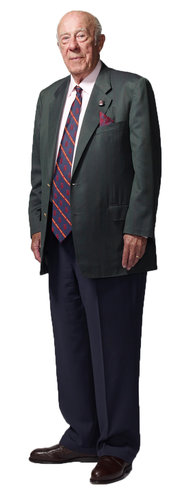 “An obese mouse given the drug SRT-1720, center, and one not given the drug, right.” Source of caption and photo: online version of the NYT article quoted and cited below.
“An obese mouse given the drug SRT-1720, center, and one not given the drug, right.” Source of caption and photo: online version of the NYT article quoted and cited below.
(p. A1) Sustaining the flickering hope that human aging might somehow be decelerated, researchers have found they can substantially extend the average life span of obese mice with a specially designed drug.
The drug, SRT-1720, protects the mice from the usual diseases of obesity by reducing the amount of fat in the liver and increasing sensitivity to insulin. These and other positive health effects enable the obese mice to live 44 percent longer, on average, than obese mice that did not receive the drug, according to a team of researchers led by Rafael de Cabo, a gerontologist at the National Institute on Aging.
Drugs closely related to SRT-1720 are now undergoing clinical trials in humans.
The findings “demonstrate for the first time the feasibility of designing novel molecules that are safe and effective in promoting longevity and preventing multiple age-related diseases in mammals,” Dr. de Cabo and colleagues write in Thursday’s issue of the new journal Scientific Reports. Their conclusion supports claims that had been thrown in doubt by an earlier study that was critical of SRT-1720.
A drug that makes it cost-free to be obese may seem more a moral hazard than an incentive to good health. But the rationale behind the research is somewhat different: the researchers are trying to capture the benefits that allow mice on very low-calorie diets to live longer. It just so happens that such benefits are much easier to demonstrate in mice under physiological stress like obesity than in normal mice.
. . .
. . . , a small pharmaceutical concern in Cambridge, Mass., designed SRT-1720 and a set of similar drugs to mimic resveratrol — the trace ingredient of red wine that is thought to activate protective proteins called sirtuins.
The sirtuins help bring about the 30 percent extension of life span enjoyed by mice and rats that are kept on very low-calorie diets.
For the full story, see:
NICHOLAS WADE. “Longer Lives for Obese Mice, With Hope for Humans of All Sizes.” The New York Times (Fri., August 19, 2011): A1 & A3.
(Note: ellipses added.)
(Note: the online version of the story was dated August 18, 2011.)














